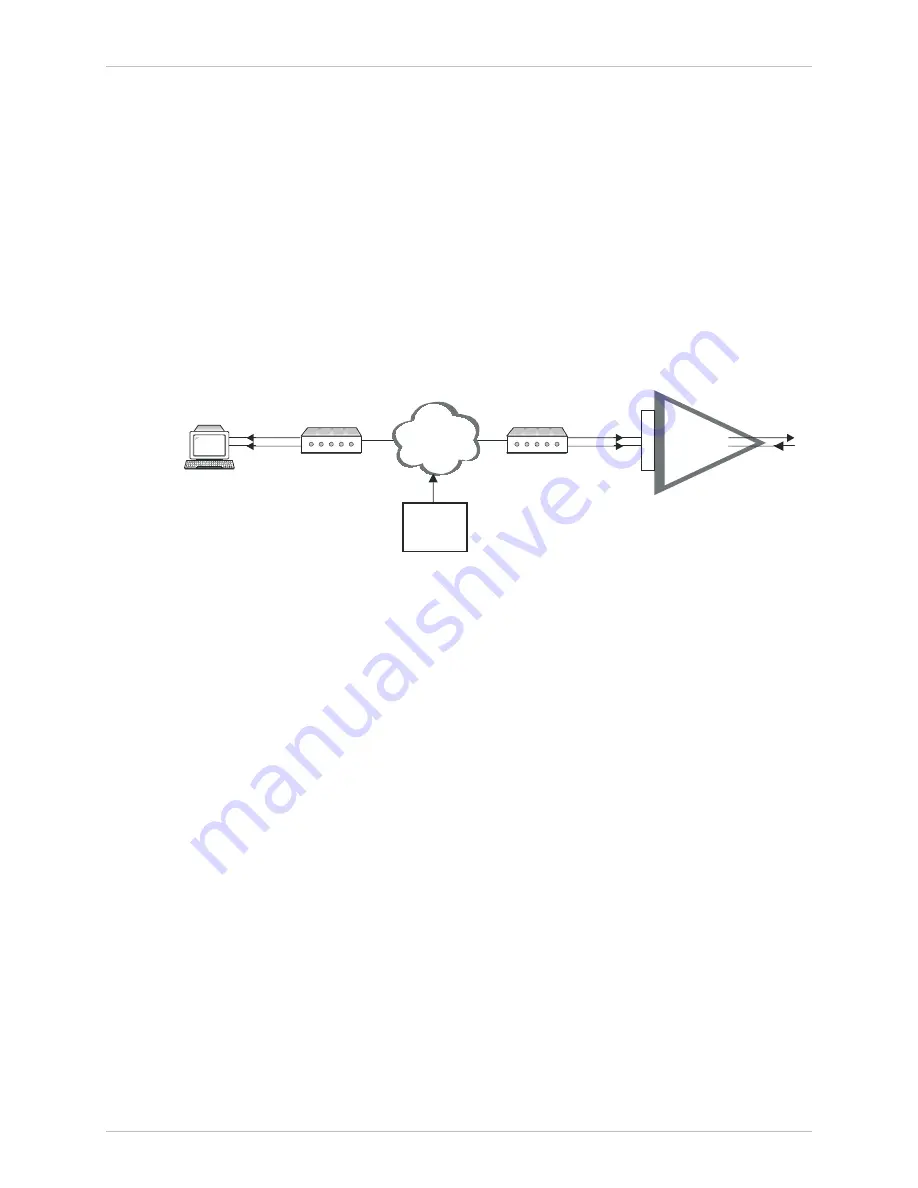
Chapter 1 General Information
MX-2100/2104
Installation and Operation Manual
1-46 Application Considerations
When operating channels in the DTE2 clock mode, one of the data channels can
be selected as the external timing reference source for the entire system timing.
The external timing option is always used because it ensures the main link transmit
and receive data rates are locked to the corresponding channel rates. If the main
link data rates are not locked to the corresponding channel rates, bit integrity will
be lost. MX-2100 units integrated in a large network that includes a master timing
reference ensures locked timing without the use of external timing. The master
timing source is used by all the equipment in the network. This includes data
equipment connected to the MX-2100 channels and the transmission equipment
serving the main link. Do not use the DTE2 clock mode when the main link timing
is derived from the internal oscillator of MX-2100.
If you are using a MX-2100 equipped with KML.5, KML.6, KML.7, KML.8,
KML.10, or KML.F modules and you cannot attain the conditions for master timing
as described above, do not use DTE2 clock mode.
MX-2100
External Timing
Digital
Data
Network
Master
Clock
KH
S
.1
DTE
XMIT Clock
XMIT Clock
RCV Clock
RCV Clock
Modem
Modem
Mode DTE 2
Figure 1-36. Clock Mode 3 (DTE2)
Timing Modes of ISDN Channels
ISDN basic rate access channels are available on the KHS.U and KVF.4/S0
modules. These channels provide the interface between the MX-2100 system and
the ISDN network.
Timing of Channels with "U" Interface
The transmit timing of a channel with "U" interface, such as a KHS.U module, is
locked to the nodal timing of MX-2100. The system nodal timing depends on the
selected operating mode of the channel:
•
NT Mode.
In the NT mode, the ISDN "U" interfaces are usually connected to
an ISDN switch, whose timing is generally provided by an accurate and stable
source.
One of the "U" interface ports connected to the network termination (NT) unit
must be selected as an external clock source for MX-2100. Thus the MX-2100
nodal clock, and therefore the transmit timing of the "U" interface, are locked
to the timing of the NT unit.
•
LT Mode.
MX-2100 provides the transmit clock for the "U" interface. The
receive timing is recovered from the signal received from the user's terminal
equipment.
















































